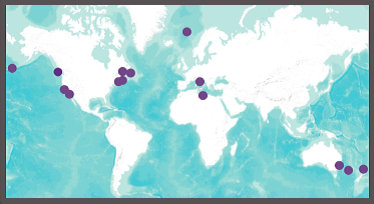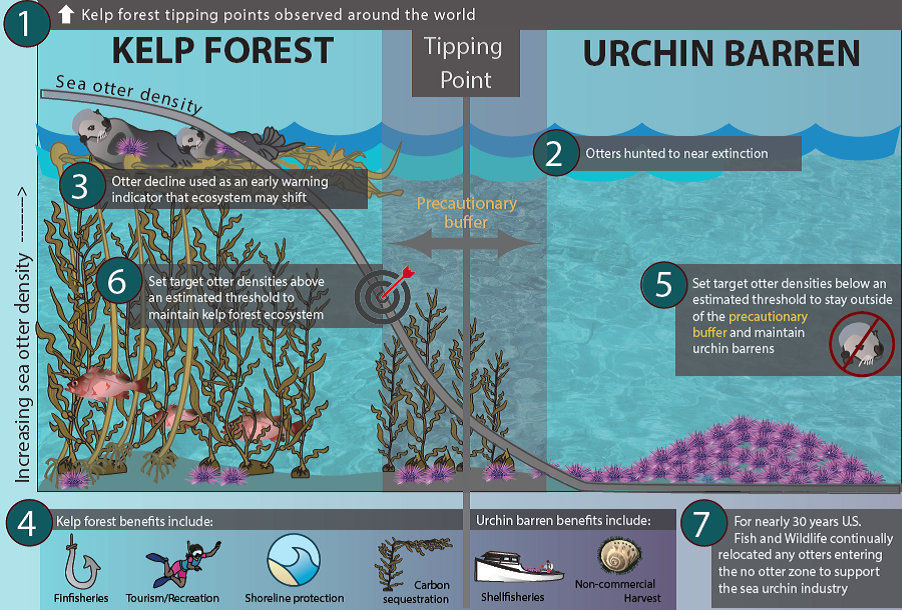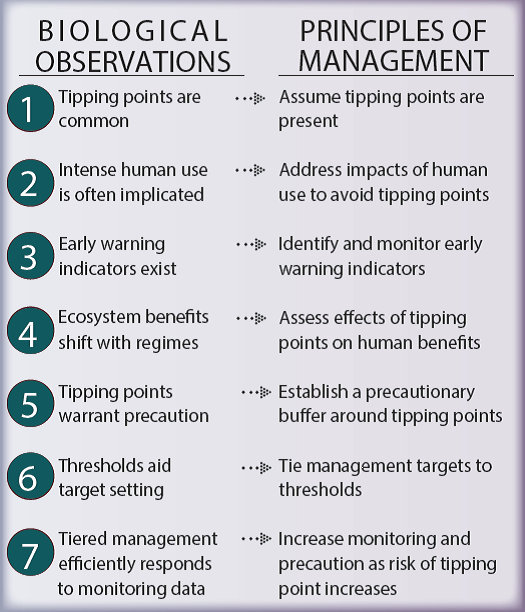Ocean Tipping Points project collaborators have outlined seven principles to help marine managers strategically predict and prevent tipping points in an article published today in Ecosystem Health and Sustainability.
Find the new publication here: http://dx.doi.org/10.1890/EHS14-0024.1
Find a 2-page summary of the information below here
Awareness is growing among scientists and environmental managers that human impacts can lead to dramatic, sometimes rapid, changes in the way that ecosystems function. These changes can impact which species and habitats are dominant, the way ecosystems work, how productive they are, how rapidly nutrients are cycled, or what benefits they provide to people.
The challenge is predicting when such tipping points might occur in the face of limited information, and how to manage habitats to prevent these unwanted ecological shifts. The tipping points principles developed by our team are designed to address this challenge.
The seven management principles, described below, are based on the biological observations that tipping points:
- Are common everywhere;
- Are associated with intense or multi-faceted human uses and impacts;
- May be preceded by changes in early warning indicators;
- May redistribute benefits among stakeholders;
- May influence the relative costs of action and inaction;
- Can aid managers in selecting biologicallyinformed management targets; and
- Often require an adaptive, tiered response to environmental monitoring.

Our team paired biological observations with key considerations for resource management, resulting in the seven tipping points principles. In this graphic and the box below, we illustrate the connection between the observations and principles with an example from U.S. Pacific kelp forest ecosystems.

Linking Tipping Points to Management
A classic example that illustrates how these seven principles manifest in practice is found in the kelp forest habitat off the western U.S. coast (see illustration above). As a keystone species, otters maintain kelp habitat by eating sea urchins, the main consumers of kelp. In the absence of otters, urchin populations can grow unchecked, their out-of-control grazing undermining kelp forests and creating ‘urchin barrens’ devoid of the shelterand biodiversity that kelp ecosystems typically offer. The infographic shows how the seven tipping points observations and associated management principles are linked to this otter-urchin example.
Integrating these principles into current management practice can be a cost-effective, efficient, and practical approach for managing ecosystems prone to tipping points. Having principles in place can motivate and guide acquisition of appropriate data, indicators, and monitoring plans.
Full Citation: Kimberly A. Selkoe, Thorsten Blenckner, Margaret R. Caldwell, Larry B. Crowder, Ashley L. Erickson, Timothy E. Essington, James A. Estes, Rod M. Fujita, Benjamin S. Halpern, Mary E. Hunsicker, Carrie V. Kappel, Ryan P. Kelly, John N. Kittinger, Phillip S. Levin, John M. Lynham, Megan E. Mach, Rebecca G. Martone, Lindley A. Mease, Anne K. Salomon, Jameal F. Samhouri, Courtney Scarborough, Adrian C. Stier, Crow White, and Joy Zedler 2015. Principles for managing marine ecosystems prone to tipping points. Ecosystem Health and Sustainability 1:art17. http://dx.doi.org/10.1890/EHS14-0024.1
